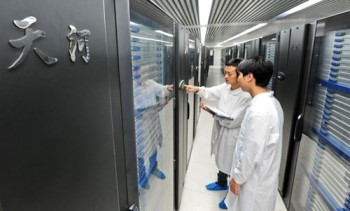Authorities have shut down supercomputer Tianhe-1A following the massive blast in Tianjin on Wednesday, Aug. 12, the Xinhua News Agency reported.
Located at the National Supercomputing Center in Tianjin, Tianhe-1A is only less than a kilometer away northwest from the blast center, but the shockwaves of the fallout have shattered windows at the center and caused the ceilings inside the building to collapse, according to the center's staff.
Liu Guangming, director of the center, however, said that the supercomputer was still running smoothly immediately, and the supercomputer and its database remain intact even after the blast, as the computer room has reinforced protection.
Liu said that together with his staff, they decided to manually shut down Tianhe-1A half an hour after the blast due to security concerns.
On Wednesday night, Aug.12, an explosion occurred in a warehouse in Tianjin City in north China, where hazardous chemicals were stored.
Rescuers reported that the blast had killed 17 people and injured more than 400 as of Thursday morning.
Tianhe-1A was recognized as the world's fastest computing system in 2010 for its ability to perform 2.57 quadrillion computing operations per second, according to a biannual Top 500 supercomputer list.
China has since developed a more advanced supercomputer, the Tianhe-2, in the southern metropolis of Guangzhou, which holds the current title for world's fastest. "Tianhe" is the Chinese word for the Milky Way constellation.
The Chinese government uses the Tianhe-1A for military purposes, as well as in other areas such as space exploration, discovery and use of new energy sources, weather forecasting and animation design.
A rivalry exists between China and the U.S. in the area of supercomputing, as China announced recently that it would restrict exports of supercomputers, following U.S. President Barack Obama's directive for the U.S. to build the world's fastest supercomputer by 2025.


